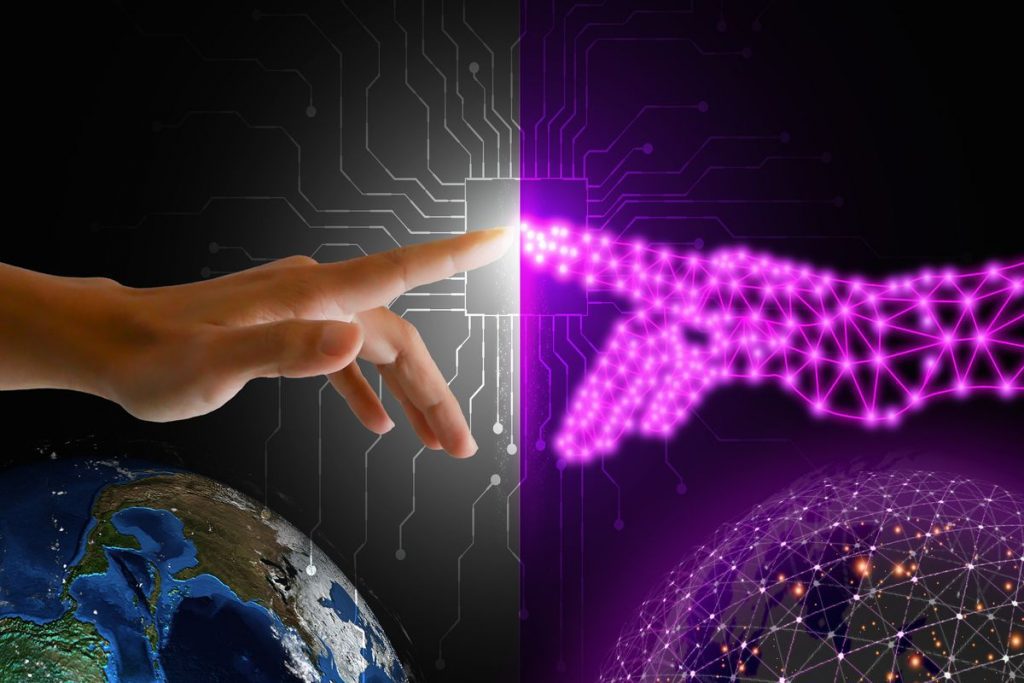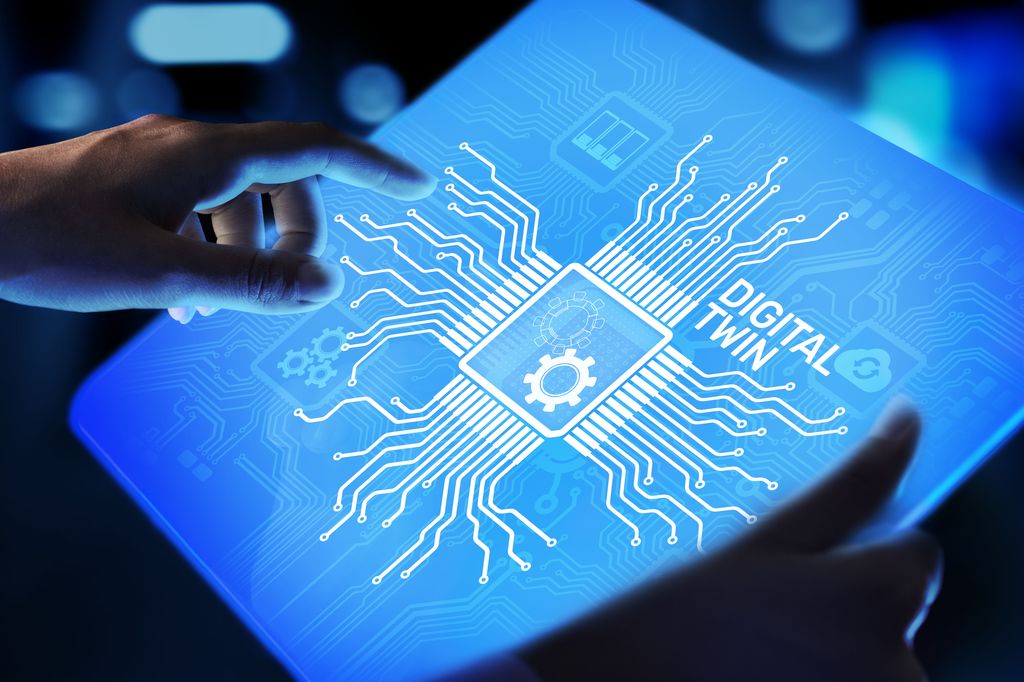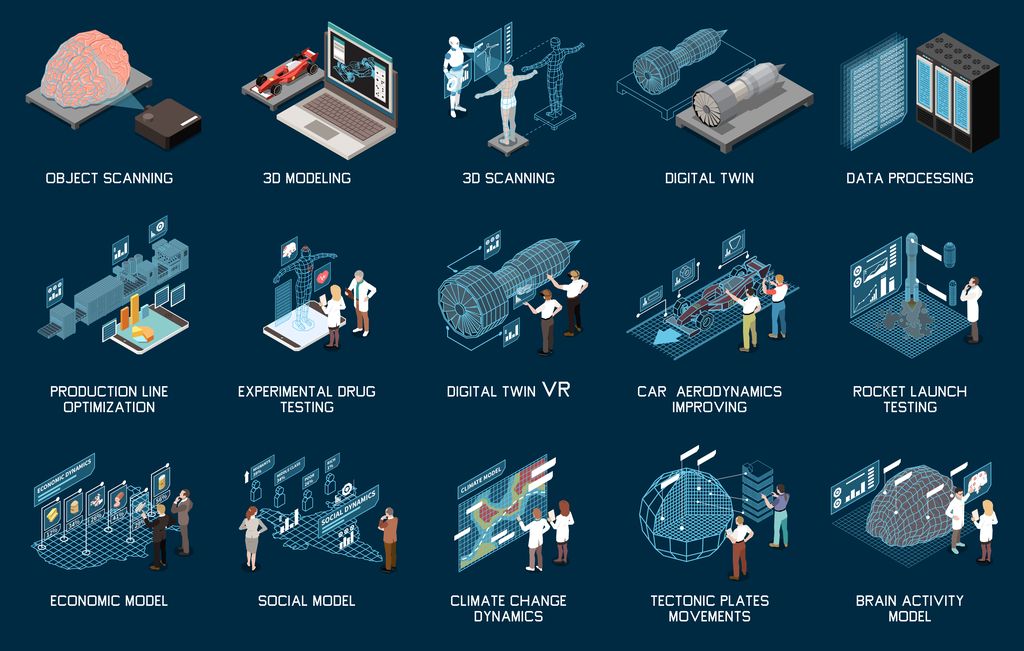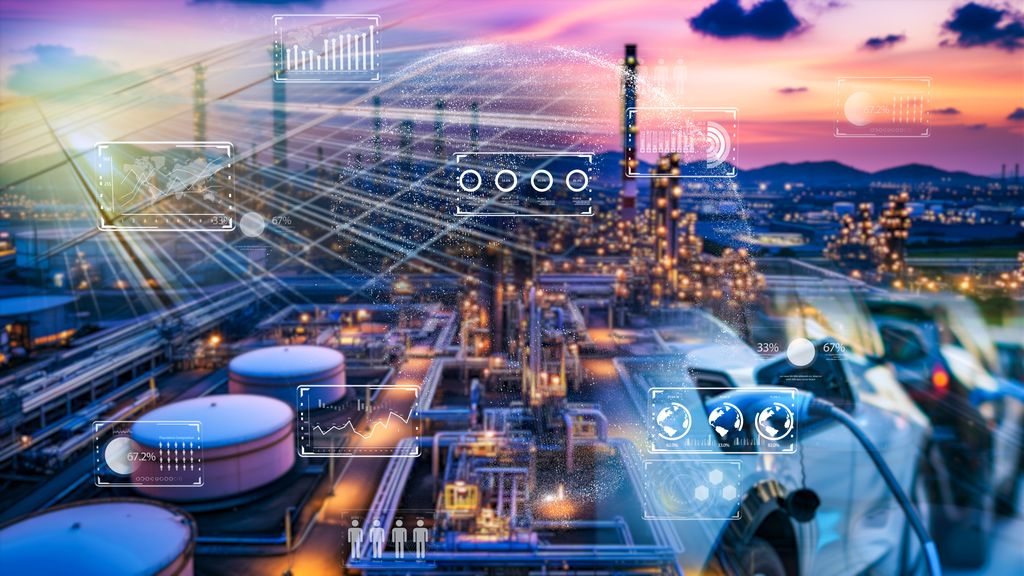
Virtual Twin vs Digital Twin: Difference Between The Models
The comparison of virtual twin vs digital twin is becoming increasingly important as these technologies reshape the way we interact with the digital and physical worlds.
Virtual twins create detailed simulations in a virtual world, allowing for extensive testing and optimisation of designs and strategies without real-world consequences.
Meanwhile, digital twins utilise live data from IoT devices to build dynamic digital versions of physical objects. Providing valuable insights and predictive analytics that enhance efficiency and guide smarter decision-making.
These technological advancements are transforming industries, from manufacturing, where they improve production workflows and product quality, the operation of an engineering asset such as a railway to healthcare, where they enable customised care plans through digital anatomical models.
Exploring the seamless integration and distinct roles of virtual twin vs digital twin models reveals their crucial impact on enhancing innovation and efficiency across various industries, bridging virtual experiences with real-world results.
Key Differences Between Virtual Twins and Digital Twins
The table below outlines the core differences between virtual and digital twins. Emphasising their distinct roles, technologies, applications and benefits in the digital and physical worlds.
| Aspect | Virtual Twin | Digital Twin |
|---|---|---|
| Definition | A virtual model designed for simulation and testing in a virtual environment. | Digital models that mirror a physical asset in real time, using real-world data. |
| Primary Use | Exploration of different scenarios and potential problems before implementation in the real world. | Monitoring and optimisation of the physical asset’s performance and condition in real time. |
| Key Technology | Virtual reality technologies, simulation models. | IoT devices, real-time data analytics, AI. |
| Applications | Product design, construction sequencing, scenario testing in sectors like aerospace (jet engines) and automotive. | Operational efficiency, predictive maintenance in sectors like manufacturing and healthcare. |
| Data Flow | Primarily one-way, from the physical world to the virtual model for simulation purposes. | Two-way flow of information, allowing real-time updates and interventions. |
| Examples | Testing wind turbine designs in various weather conditions and virtual walk rounds. | Monitoring a wind turbine’s health and performance, adjusting operations as needed. |
| Benefits | Allows for risk-free testing and innovation, reducing costs and time to market. | Enhances operational efficiency, reduces downtime and improves lifecycle management. |

What is a Digital Twin?
Digital twin technology creates a digital replica of physical assets, transforming how industries like manufacturing, engineering, construction and healthcare operate.
By mirroring real-world systems in real time, it offers insights that drive efficiency and innovation. Read more about the benefits of Reality Capture.
For example, in manufacturing, digital twins of production lines can predict issues before they occur. This helps to optimise the manufacturing process and improves product quality.
In healthcare, digital twins of organs or systems enable personalised treatments, enhancing patient care.
In engineering, digital twins of a nuclear power plant can monitor the output and temperatures of a reactor. By using predictive AI models preductions on issues can be made before the arise.
This technology, powered by the Internet of Things (IoT) and artificial intelligence, ensures a seamless flow of information between the physical and digital worlds. Helping businesses make informed decisions based on comprehensive, real-world data.
As digital twins evolve, they’re set to revolutionise sectors by providing detailed, dynamic models that respond to new data, shaping the future of operational efficiency and product design.
Different Types Of Digital Twins
Component Twin
This type focuses on individual components or parts of a larger system, such as a turbine blade in an airplane engine.
It allows for detailed analysis and optimisation of that specific part’s design and performance. This contributes to the overall efficiency of the system.
Asset Twin
An asset twin zeroes in on a single physical asset, like a specific machine in a factory.
It helps monitor the asset’s condition in real time, predicts maintenance needs and extends its lifespan through informed decision-making.
System Twin
System twins encompass an entire system. This could be a network of machines in a manufacturing plant or the electrical grid of a city.
They offer a holistic view of how different components interact and perform together, facilitating system-wide optimisations and improvements.
Process Twin
This type simulates and analyses the processes involved in manufacturing or service delivery, such as the assembly line in a car factory.
It’s used to identify bottlenecks, test process changes virtually and enhance operational efficiency without disrupting the actual process.
What is a Virtual Twin?
Virtual twin technology, by contrast, offers a different approach to understanding and interacting with both the virtual and physical worlds.
It allows for the creation of immersive, virtual models that simulate real-life scenarios, enabling the testing and refinement of systems before they’re implemented in the real world.
This is particularly useful in complex systems like wind turbines or supply chains. Where virtual twins can predict how changes in one part affect the whole.
In the engineering and constructions industries, virtual twins can be used for virtual walk rounds of built assets, visualising final ‘as built’ 3D models and can simulate installation or build sequences.
In the healthcare industry, virtual models of new medical devices can be tested under various scenarios, enhancing safety and efficacy.
Similarly, in the energy sector, virtual representations of power grids can optimise energy output and distribution, reducing waste and improving efficiency.
Virtual twin technology, especially when combined with virtual reality technologies and data analysis, enables a deeper, more refined exploration of potential solutions.
This approach represents the next step in digital modelling, providing a dynamic and adaptable tool for the industrial metaverse and beyond.

Use Cases and Applications
The integration of digital twins across various sectors is significantly enhancing operational efficiency and decision-making processes.
In supply chains, these digital replicas provide a real-time overview of each component, allowing for prompt adjustments and improved optimisation in the face of disruptions.
Technology leaders are spearheading the development of digital twin solutions, applying them to diverse areas ranging from intricate manufacturing processes to complex naval operations.
This approach relies on a data-driven methodology that creates a closed-loop system. Where both historical and real-time data perpetually refine the digital twin, ensuring it remains an accurate mirror of its physical counterpart.
Sector Use Cases
Healthcare Sector
Digital twins in healthcare replicate patient data and treatment histories, offering real-time monitoring and personalised care plans.
Virtual twins complement this by allowing healthcare professionals to simulate surgeries or treatment outcomes on virtual organs, combining data-driven insights with immersive training experiences to enhance patient care and medical education.
Energy Industry
Digital twins monitor and analyse the performance of energy assets like wind turbines in real time, optimising operations and predicting maintenance needs.
Virtual twins contribute by simulating energy systems under various environmental conditions. Enabling the design and testing of more efficient and resilient energy solutions before real-world implementation.
By using a secure construction cloud solution, each stakeholder has the ability to access this real time information, wherever they are in the world.
Supply Chain Optimisation
Digital twins provide a dynamic overview of supply chain operations, tracking goods and predicting disruptions using real-time data.
Virtual twins add value by modelling the entire supply network, allowing managers to test the effects of changes or challenges in a virtual setting.
Manufacturing and Product Design
In manufacturing, digital twins offer real-time insights into production lines, enhancing efficiency and detecting potential issues early.
Virtual twins are used to prototype and refine products and processes in a virtual environment, reducing development time and costs and encouraging innovation through extensive testing of designs before physical production.
The broadening application of digital twin technology into fields like life sciences and healthcare demonstrates its flexibility. Alongside it potential to significantly improve how industries tackle real-world challenges.
By seamlessly connecting the virtual and digital worlds, digital twins are establishing new standards for operational excellence, product innovation and customer experiences across a range of sectors.
Defence and Strategic Planning
In the defence sector, entities like the U.S. Navy leverage both digital and virtual twins for comprehensive asset management and strategic operational planning.
Digital twins create accurate replicas of naval assets, facilitating real-time monitoring and maintenance scheduling, while virtual twins simulate complex operational scenarios.
This dual approach ensures military readiness, optimises resource allocation and bolsters national security through advanced technological integration.

Challenges and Considerations
Implementing digital and virtual twin technologies can present challenges, such as ensuring cybersecurity, maintaining data privacy and achieving interoperability among diverse systems.
In the digital world, protecting the vast amounts of data generated by digital twins, from real-world assets in urban planning to complex systems in healthcare, is paramount.
Ensuring data security and privacy requires robust cybersecurity measures to guard against unauthorised access and potential breaches.
Interoperability poses another significant challenge, as digital twins must seamlessly integrate with existing digital ecosystems.
This is crucial in sectors like manufacturing, where digital replicas of physical twins and process twins must work in concert with legacy systems.
The dynamic nature of digital and virtual twins, reflecting real-time changes in physical counterparts, demands flexible and scalable solutions to accommodate evolving requirements and new data inputs.
At REBIM®, we have addressed the data integration issue by implementing a built in MQTT message broker that can be connected to most IoT devices.
MQTT is an industry standard open protocol for communicating between different types of IoT device technologies.
Addressing these considerations is essential for harnessing the full benefits of digital twins. From enhancing operational efficiency in the energy sector to improving product design and quality in the largest manufacturing businesses.
Overcoming these hurdles is key to realising the data-driven, experience-driven potential of digital and virtual twin technologies across various industries.
The Future of Virtual and Digital Twins
As virtual and digital twin technologies evolve, their combination with artificial intelligence (AI) and machine learning is poised to enhance predictive analytics significantly.
This will lead to more accurate and forward-looking models that can predict potential issues and optimise systems in various fields, such as energy and manufacturing.
Such progress is expected to drive sustainability by ensuring efficient resource utilisation and minimising environmental impacts.
At the same time, the widespread application of these technologies brings to the forefront ethical issues related to data privacy and the responsible use of technology.
Addressing these concerns will be crucial as digital and virtual twins become more integral to sectors like healthcare, renewable green energy and urban planning.
Looking forward, the integration of AI and machine learning with twin technologies is set to bring about a new wave of innovation.
It promises to improve the way we interact with digital and physical worlds. Leading to smarter, more sustainable and ethically mindful solutions that have a positive impact on society.

Wrapping Up Virtual Twin Vs Digital Twin Differences
The journey through understanding virtual and digital twin technologies highlights their significant role in enhancing industries like healthcare, energy, manufacturing and urban development.
These technologies provide deep insights and simulations, paving the way for optimisation, innovation and environmental sustainability.
The future looks promising as artificial intelligence and machine learning are set to refine these tools, offering sharper predictive analytics and streamlined operations.
Yet, with these advances comes the responsibility to address ethical and privacy concerns. The importance of responsible data management and ethical technology use cannot be overstated. This helps ensure trust and maximises the positive impacts of these innovations.
The evolution of digital and virtual twins marks a new era of efficiency and sustainability in both digital and physical worlds. Their integration into various sectors promises to improve operational processes, contribute to economic growth and enhance overall quality of life.
As we move forward, these technologies will become integral in crafting a smarter, more interconnected world, demonstrating their undeniable impact on society’s progress.